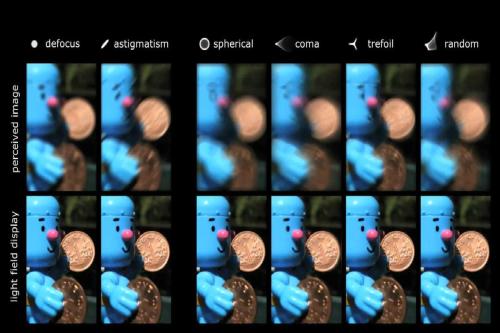
Nearly everybody at some point in their life requires or will require some kind of vision correction, either in the form of glasses, contacts, or laser lens surgery. Corrective lenses, or glasses, have been around since the 13th century.
However, as more and more of us stare at computer screens for good portions of our lives, an increasing number of us require help with our vision.
Related: This 28-inch 4K monitor from Acer costs well under $1,000
Thankfully, researchers from the University of California, Berkeley and MIT have come up with a different approach to tackling this problem by introducing display technology that can automatically correct for poor or lackluster eyesight.
Think of this as correctional lenses for your laptop, desktop, tablet, smartphone, or any other device with a screen. Someday, you may not need to wear corrective lenses to perform a lot of tasks when using something with a screen, like word processing, working in large spreadsheets, editing high-resolution photos, and more.
What are vision correcting Displays?
Often, visual defects are the result of our inability to focus at a specific distance, which distorts the image. What corrective lenses, glasses, and contact lenses do is predict how the user’s eyes will distort the image on the screen, and correct it so that it appears normal.
Related: Philips fires back at Acer by releasing an affordable 28-inch 4K monitor of its own
Combined with a light filter placed in front of the screen itself, the supporting software uses algorithms that “correct” the image based on the person’s corrective lens prescription. As each individual pixel passes through a small hole in the light filter, the algorithm modifies the light. As each beam of light hits the user’s retinas, it helps generate a clearer image for them.
Developed at UC Berkeley, the algorithm, in an image based on specific visual impairments, adjusts the intensity of the direction of light that emanates from each pixel.
“Our technique distorts the image such that, when the intended user looks at the screen, the image will appear sharp to that particular viewer,” Brian Barsky, UC Berkeley professor of computer science and vision science says. “But if someone else were to look at the image, it would look bad.”
In other words, a drawback to allowing your display to make corrections specific to your vision is that others who don’t have your vision problems will not be able to see the screen clearly.
Currently, it won’t work for multiple people with different vision needs when they’re viewing the display simultaneously either. Think of it this way: if you put on someone else’s glasses, everything would look weird, and your brain and eyes would probably start hurting in no time.
However, according to Ramesh Raskar, an associate professor at the MIT Media Lab who co-authored the paper on this research, displays with high enough resolutions could allow the screen to be used by more than one person at a time.
When will we see vision correcting displays?
The good news is that implementing this tech will not require all-new hardware.
The Berkeley team used an iPod Touch with a thin acrylic filter affixed over the screen. The filter was perforated with thousands of evenly spaced tiny holes for light to pass through.
This “light field display” was capable of controlling how light rays emanate from the screen. Thereby, with the aid of the software, it created a sharper image.
Samsung, LG, and a few other electronics giants are spending big time and money on such display research. So far this year, we’ve seen demos of borderless, foldable, and rollable plastic OLED displays. However, this vision-correcting technology is still a few years out.
It has some obstacles to overcome too, like the inability to work with multiple sets of eyes at the same time. Plus, at this point, the user has to stay in one position for the technology to work properly.
In any case, here’s just one more way computers can help us overcome handicaps and level the playing field sometime in the not-too-distant future.